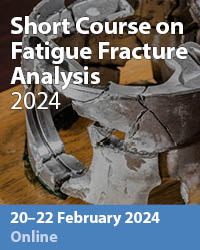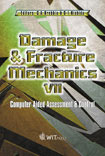Smart Materials For Early Damage Detection
Price
Free (open access)
Transaction
Volume
37
Pages
Published
2002
Size
573 kb
Paper DOI
10.2495/DM020281
Copyright
WIT Press
Author(s)
V Verijenko, B Burton & S Shaik
Abstract
Accumulated Damage within structures is a topic that has been tackled from a variety of different perspectives, including mathematical modelling, simulation techniques and both destructive and non-destructive testing. A more recent concept is that of monitoring the damage within a given structure either actively or passively with permanently attached sensors. While many researchers have successfully advanced the science of actively monitoring structural health, the cost associated with implementing a comprehensive active system with the related data logging and storage, is often high. During the past few years, a small group of researchers has been developing the concept of producing cost-effective smart materials, which passively monitor the peak strain within structures. The beauty of these smart materials lies in the fact that they can be used to manufacture structural load-bearing components. In this way a completely smart structure is produced, capable of measuring and \“memorising” its own level of damage. The means of measuring strain and \“memorising” it lies in the crystal structure of the \“smart” alloys under investigation. Although these ferrous alloys possess an austenitic crystal structure at room temperature, application of strain produces a transformation in crystal structure, to martensite. Because the austenite is paramagnetic, and the martensite is ferromagnetic, a measurement of the magnetic susceptibility of the material produces differing readings dependent on the amount of martensite present, which in turn is directly proportional to the amount of strain experienced by the material. Thus a measurement of magnetic susceptibility may be directly correlated with strain. This \“strain reading” will be the peak strain experienced by the material, and not necessarily the current level of strain, due to the fact that the transformation from austenite to martensite is irreversible. Metastable ferrous alloys can therefore be used to detect overall peak strain within a structure, or to indicate the presence of localised damage or crack initiation, depending on how the system is set up.
Keywords





